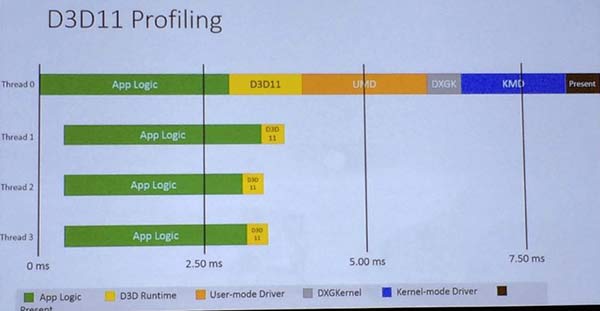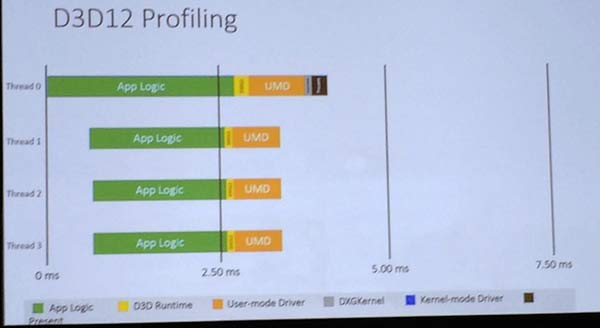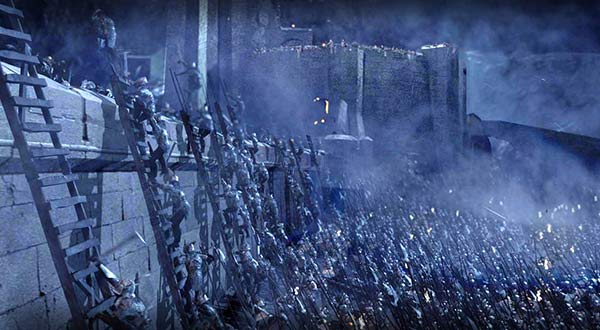Windows 10 will come packing DirectX 12. The next big official chunk of information about Microsoft's next OS and consumer facing features such as DirectX is expected to be revealed on 21st January. While we have not seen that much information about DirectX 12 emerge so far - we do have another tasty titbit. Stardock founder, Brad Wardell, has shared some snapshots of Microsoft slides comparing DirectX 12 performance to DirectX 11.

Wardell says the slides are official Microsoft ones. In summary he says that DirectX 12 is the "first version of DirectX that really uses multiple cores effectively." That is what the slides show. If you look at the D3D11 slide above you can see how much of the computing work is concentrated on the first processor core. Compare that with the chart below where tasks are much more evenly spread out on the example quad-core processor.

The charts show the dramatic difference in the work balance on a multi-core processor, contrasting the two APIs. The x-axis markings reveal that in DX11 the frame in question took around 9ms to render while the same frame in DX12 took around 4ms.
Depending upon the rest of your system and how the game was developed this could easily translate into a doubling of frame rates using the new Microsoft API. "The reason we're all getting so excited is that DirectX 12 should be the biggest performance bump for those who utilize it we've ever seen," exclaimed Wardell. Furthermore he suggests that "with a modern CPU + GPU combo with DirectX 12 you could do parts of the Battle of Helms Deep from LOTR (Lord of the Rings) in real-time". Thus game visuals are going to be decidedly different as DX12 becomes established. This sounds an exciting prospect!

Our last glimpse at the capabilities of Microsoft's new 3D gaming API was from Siggraph 2014 when Intel showed a graphics demo which was switched between using the DirectX 12 and Direct3D 12 APIs and the older DirectX 11 ones on a Microsoft Surface Pro tablet. Intel showed the power use and/or frame rate boost users could achieve in an asteroid field demo. That demo showed a potential FPS boost of 70 per cent on the Microsoft/Intel hardware using DX12.













